Hebrew: קוציץ סורי (Bible: charûl,חרול), Arabic: كف الدب,شوك الجمل
| Scientific name: | Acanthus syriacus Boiss. | |
| English name: | Syrian bear's breech | |
| Hebrew/שם עברי: | Kotsitz Suri, קוציץ סורי (Bible: charûl,חרול) | |
| Arabic/الاسم العربي: | Kaff al-Deb, Shawk al-Jamal, كف الدب,شوك الجمل | |
| Español: | Acanthus syriacus | |
| 中文-Chinese: | 敘利亞熊的後膛 | |
| Family: | Acanthaceae, קוציציים |
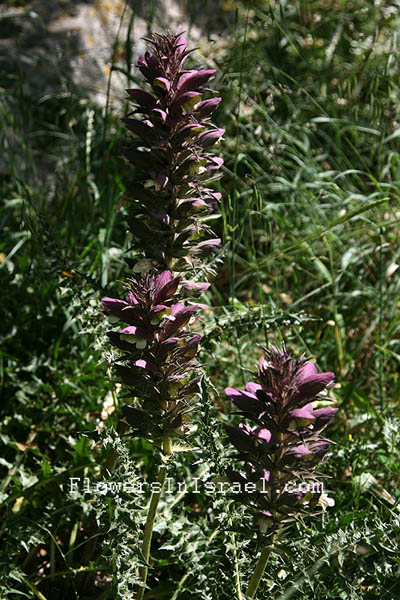
|
| Life form: | Hemicryptophyte, a perennial plant having its overwintering buds located at the soil surface | |
| Spinescence: | Leaves, bracts | |
| Leaves: | Opposite, rosette, dissected, pinnate, dentate or serrate, spinescent | |
| Inflorescence: | cyme, raceme, Spike: Unbranched, elongated, indeterminate inflorescence with sessile flowers | |
| Flowers: | Flower spikes bearing purplish flowers | |
| Plant height: | 40 - 180cm | |
| Flowering Period: | March, April, May | |
| Habitat: | Garrigue and batha (or phrygana), soft-leaved scrubland | |
| Distribution: | Mediterranean Woodlands and Shrublands, Semi-steppe shrublands, Montane vegetation of Mt. Hermon | |
| Chorotype: | Mediterranean | |
| Summer shedding: | Perennating |

Derivation of the botanical name: Acanthus, acantha, ακανϑα, thorn, thistle; "ake," a sharp point, a genus of plants belonging to the natural order Acanthaceae. syriacus, from Syria. Bear's breech, from the size and appearance of the leaf which is very big, broad, and distinctly hairy. The Hebrew word:קוציץ, kotzitz from Greek akantha, a thorn. It should be noted that the name refers to the thorns of the bracts, and not all species have thorny bracts. Most members of the family are not thorny.
The Acanthus has a large leaf with a broken edge. It is a genus of about 30 species and two principal species are the Acanthus spinosus and Acanthus mollis, natives of the southern parts of Europe and the warmer parts of Asia and Africa. In Israel we have the the Syrian acanthus and has a rosette of large spiny lobed leaves. It can also be considered as one of the thistles in the Bible. The Acanthus spinosus has narrow, spiky, and pointed lobes of the Greek origin, while the Acanthus mollis is broad, blunt, and soft of the Roman. The motif started to support plant-like volutes in architectural enrichments and to form the calyx from which spiral scrolls arise. It has been formalised, simplified, and modified in a variety. The deeply serrated and scalloped leaves and strong, graceful, curving stems inspired the formalised decorative motif. In classical Greek and Roman ornamentation, its appearance on Corinthian and Composite capitals was popular to make the motif synonymous with formal classic architecture. Acanthus spinosus was used on Greek, Hellenistic, and Byzantine capitals, and Acanthus mollis on Roman, Romanesque, and Early Gothic ones. And they made the foot appear like ivy growing out of the stone, interwoven with akanthus and surrounded with a vine which encircled it with clusters of grapes, which were worked in stones, up to the top of the foot. "Now the first invention of that capital is related to have happened thus. A girl, a native of Corinth, just of marriageable age, was attacked by an illness and passed away. After her burial, her nurse, collecting a few little things which used to give the girl pleasure while she was alive, put them in a basket, carried it to the tomb, and laid it on top thereof, covering it with a roof-tile so that the things might last longer in the open air. This basket happened to be placed just above the root of an acanthus. The acanthus root, pressed down meanwhile though it was by the weight, when springtime came round put forth leaves and stalks in the middle, and the stalks, growing up along the sides of the basket, and pressed out by the corners of the tile through the compulsion of its weight, were forced to bend into volutes at the outer edges. Just then Callimachus, whom the Athenians nick-named 'catatechnos' for the refinement and delicacy of his artistic work, passed by this tomb and observed the basket with the tender young leaves growing round it. Delighted with the novel style and form, he built some columns after that pattern for the Corinthians, determined their symmetrical proportions, and established from that time forth the rules to be followed in finished works of the Corinthian order". 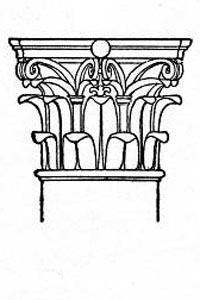
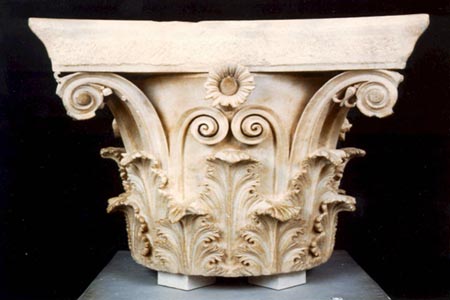
Corinthian capital of Vitruvius with acanthus leaves Symbolism: In Mediterranean countries,the symbolism and meaning associated with the Acanthus is that of enduring life, and the plant is traditionally displayed at funerary celebrations. According to J.C.Cooper (1987), acanthus represents life, immortality, horns of the lunar crescent, veneration of the arts in Mediterranean countries. As acanthus appeared first in the Greek monumental art, often on burial urns in association with the death and morning, a definite relationship between the plant and the tomb is to be existed. It is a well-known story of Vitruvius’ acanthus related to the female and funerary, and phrases in Greek mythology indicate a sepulchral significance of the plant (Vitruvius's (Marcus Vitruvius Pollio born c. 80–70 BCE, died after c. 15 BCE) 'On Architecture' (book IV).) Acanthus was also used as an ornamental plant and was common in gardens during Roman times (Katharine T. von Stackelberg, 2009). Bible resources:
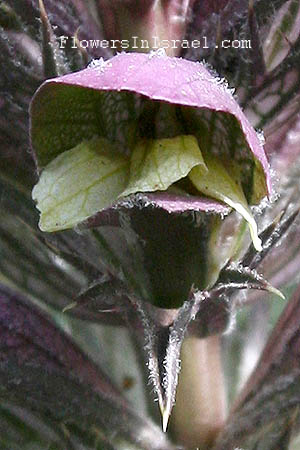 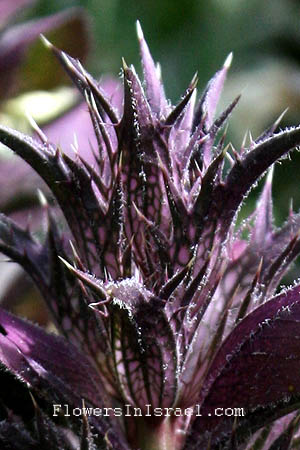
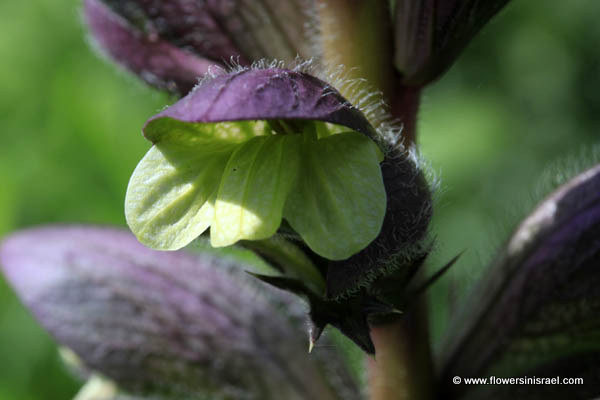
|